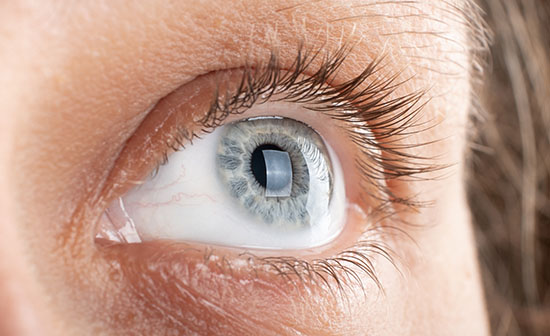
The cornea is often referred to as the “window of the eye”. It is the clear front surface of the eye that refracts (bends) light coming into the eye. It is crucial to have a healthy and hydrated cornea for clear vision.
Some of the medical conditions that affect the cornea:

All of these conditions need to be properly diagnosed by an eye care specialist. In some cases these conditions can be vision threatening. Once diagnosed an eye care specialist can develop an appropriate plan of treatment. Annual eye exams are critical to maintaining healthy eyes.

Today more than ever, dry eye is a common problem. The eye relies on a constant flow of tears to provide proper lubrication for vision and comfort. Tears are secreted by glands around the eye and when there is an imbalance in the tear flow, dry eyes result. Symptoms may include pain, light sensitivity, a gritty sensation, itching, redness, blurry vision, or foreign body sensation in the eye. There are multiple physiological factors that can cause dry eye symptoms. Additionally, dry eyes can be caused or exacerbated by dry and hot weather, dust, allergens, eye strain caused by excessive time on computer or phone screens as well as air conditioning. An eye care specialist can diagnose what the cause or causes of dry eye are and determine the proper course of treatment for each patient.
Treatments for dry eye can include both prescription and non-prescription eye drops. In addition, there are several office based procedures your eye care specialist may recommend to alleviate dry eye such as punctal occlusion. For some patients, their conditions are helped with nutritional supplements such as taking Omega-3 fatty acids.
Call California Eye Professionals at: 1(888) EYE-PROS or 1(888) 393-7767 today to schedule an appointment!
California Eye Professionals has three central office locations in Temecula, Menifee, and Hemet, California. Each office offers general eye examinations and eye consults. Our optical boutiques featuring designer frames and contacts are available for patients to browse at each location.
Click on each location for details